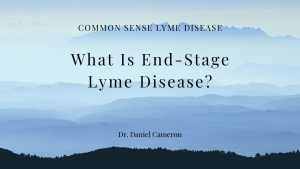Call for your appointment today 914-666-4665 | Mt. Kisco, New York

“The exact prevalence of NB [neuroborreliosis] in France is unknown because reporting is not required,” explains Guet-Revillet. “Nevertheless, the prevalence seems rare.”
The outcome for the 9 children “was favorable” after a 2- to 3-week course of third-generation cephalosporin.
However, the outcomes have not been so positive for other pediatric cases. According to the authors’ review of the literature:
“Rare manifestations associated with NB in children include myoclonia, ataxia, vertigo, cranial polyneuritis with the exception of facial nerve palsy, acute transverse myelitis, and benign and isolated intracranial hypertension.”
“Exceptional cases of acute disseminated encephalomyelitis and cerebrovascular complications such as stroke have been reported.”
[bctt tweet=”Article reviews 9 cases of children living in France with Lyme neuroborreliosis. ” username=”DrDanielCameron”]
Diagnosing some of these children can be extremely challenging, Guet-Revillet points out, “because of the clinical and biological similarity of [neuroborreliosis] to viral meningitis (especially herpes simplex virus and varicella-zoster virus meningitis) and tuberculous meningitis.
This difficulty is exacerbated by the long delay involved in obtaining serological test results.
Related Articles:
Long-term problems for some Lyme neuroborreliosis patients
Case report: Lyme neuroborreliosis more common in children
What happens to the brain during acute Lyme neuroborreliosis?
References:
- Guet-Revillet H, Levy C, Vallet C, et al. Lyme neuroborreliosis in children: Report of nine cases and a review of the literature. Arch Pediatr. 2019;26(3):133-137.



